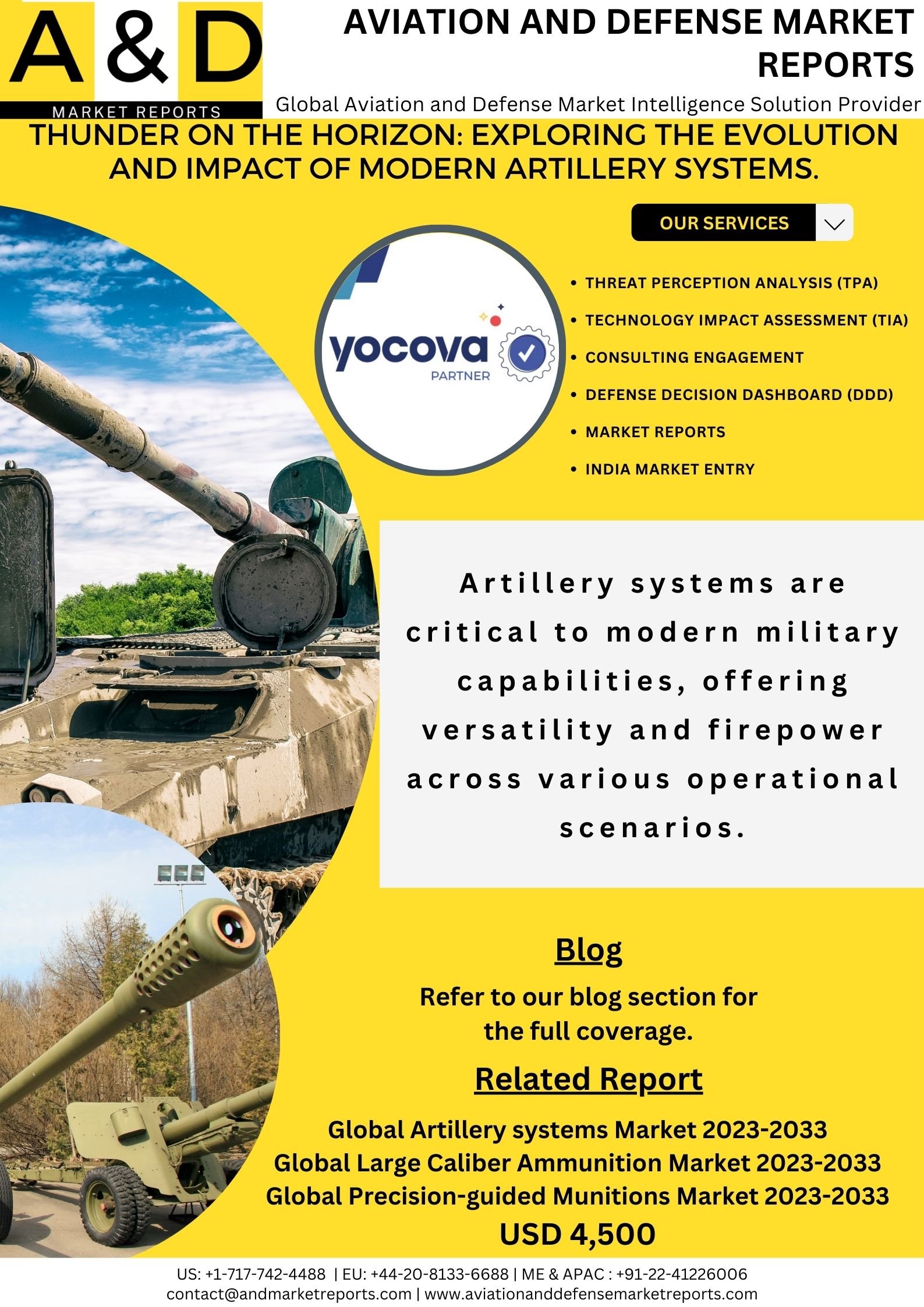Large-caliber firearms designed to launch munitions over long distances are known as artillery systems. They are critical components of modern military operations, providing firepower to support ground forces or engage distant targets. There are various types of artillery systems, each with a specific purpose.
Towed Artillery is artillery that is towed by vehicles and is usually stationary when firing. Self-Propelled Artillery: Rather than being mounted on a tracked or wheeled vehicle, self-propelled artillery can move on its own, allowing for greater battlefield mobility. Rocket artillery systems, as opposed to traditional shells, use rockets. They are known for being able to fire multiple rounds over a large area. Coastal artillery is deployed along coastlines to defend against naval threats and support naval operations. Howitzers are versatile artillery pieces that can fire from both high and low angles. They are frequently used to provide close assistance to ground forces.
Because of their adaptability to various combat scenarios, artillery systems are versatile and play an important role in modern military operations. Artillery systems can be used for a variety of missions, including direct fire support for ground forces, counter-battery operations, air defense suppression, and strategic bombardment. Many modern artillery systems are multi-role, which means they can perform different functions depending on the mission requirements. Artillery can operate in a variety of terrains, including cities, deserts, mountains, and forests. Artillery systems of various types, such as towed, self-propelled, or rocket artillery, provide flexibility in selecting the best platform for a given terrain. Some artillery systems are designed to support amphibious operations, such as beach landings and subsequent inland operations.
Artillery systems can fire high-explosive shells, precision-guided munitions, smoke rounds, and illumination rounds, among other things. This adaptability allows firepower to be tailored to specific mission requirements. Artillery units can operate in joint and combined arms operations alongside other military branches such as infantry, armor, and aviation. Artillery’s overall effectiveness in a joint operational environment is enhanced by coordination with air support, intelligence, and reconnaissance assets. Depending on the size of the operation, artillery units can range from single guns to large batteries or rocket artillery systems. Because of its scalability, artillery is appropriate for a wide range of scenarios, from small-scale skirmishes to large-scale conflicts.
Artillery systems can be modified to support counterinsurgency operations and provide fire support in asymmetric warfare scenarios. Technology advancements have enabled the integration of precision-guided munitions, allowing artillery systems to engage targets with high accuracy while minimizing collateral damage.
ADVANCEMENTS
Automation and robotics integration to improve loading, aiming, and firing processes. Automated artillery systems have the potential to reduce crew size while increasing operational efficiency. Advanced fire control systems, such as digital targeting, GPS guidance, and inertial navigation systems, are being implemented. These systems increase accuracy while decreasing the time required to engage targets. Artillery systems with long-range capabilities are being developed. Increased firing ranges are made possible by advanced propellants, barrel designs, and aerodynamics. Precision-guided munitions (PGMs) are being integrated to improve accuracy and reduce collateral damage. Smart munitions such as GPS-guided, laser-guided, and other smart munitions increase the effectiveness of artillery strikes. Network-centric warfare concepts are being implemented, allowing artillery systems to operate within integrated and interconnected military networks.
Coordination between artillery units and other military assets is improved by improved communication systems. Lightweight and mobile artillery systems are being developed to improve rapid deployment capabilities. Wheeled and tracked self-propelled artillery systems provide greater battlefield agility. Counter-battery radar system advancements to detect and neutralize enemy artillery positions. Rapid response and effective counter-battery capabilities improve battlefield survivability. Electromagnetic railguns for artillery applications are being tested. These railguns use electromagnetic forces to propel projectiles at incredible speeds. Design of modular artillery systems that are easily adaptable to various missions and roles. Versatility is enhanced by a common chassis and interchangeable components. Incorporation of stealth technologies and camouflage to reduce artillery system detectability.
CHALLENGES
While artillery systems are powerful and versatile, they also face several technical and strategic challenges. Artillery units are threatened by the increasing sophistication of enemy counter-battery systems, such as radar systems and precision-guided munitions. Artillery positions can be detected and targeted by adversaries, necessitating effective countermeasures and survivability measures. To support fast-moving operations, artillery systems must be mobile and quickly deployable. However, the sheer size and weight of some artillery pieces can limit their mobility, particularly in difficult terrain. Artillery systems frequently necessitate significant logistical support, such as ammunition resupply, maintenance, and transportation. The logistical burden can be difficult to bear, particularly in remote or austere operational environments. Artillery systems can be limited in their effectiveness in certain terrains, such as dense urban areas or mountainous regions.
Purchasing, maintaining, and operating artillery systems can be costly. Budget constraints often limit the acquisition of advanced or sufficient artillery assets by governments and military organizations. Despite advances in range capability, artillery systems may still face limitations in reaching specific targets, especially in contested environments where the enemy has effective anti-access and area denial (A2/AD) capabilities. Because of the proliferation of precision-guided munitions, effective countermeasures, such as anti-jamming technology and improved electronic warfare capabilities, are required to protect artillery systems from being targeted. Coordination and integration of artillery support with other military branches, including air and ground forces, can be difficult. Joint operations require constant communication and interoperability.
CONCLUSION
While artillery systems face challenges, ongoing innovation, and strategic considerations ensure that they remain relevant and effective in supporting ground forces and shaping the landscape of modern military operations.
Recent Work: –
- SKYWARD HORIZONS: Navigating The Future With Personal Air Mobility
- ENHANCING DEFENSE CAPABILITIES: NAVIGATING THE FUTURE WITH AUGMENTED AND VIRTUAL REALITY
- DATA, DRONES, AND DECISIONS: THE TECH REVOLUTION IN C5ISR
- Commanding the Future: Exploring the Evolution of Battlefield Management Systems in Modern Warfare
